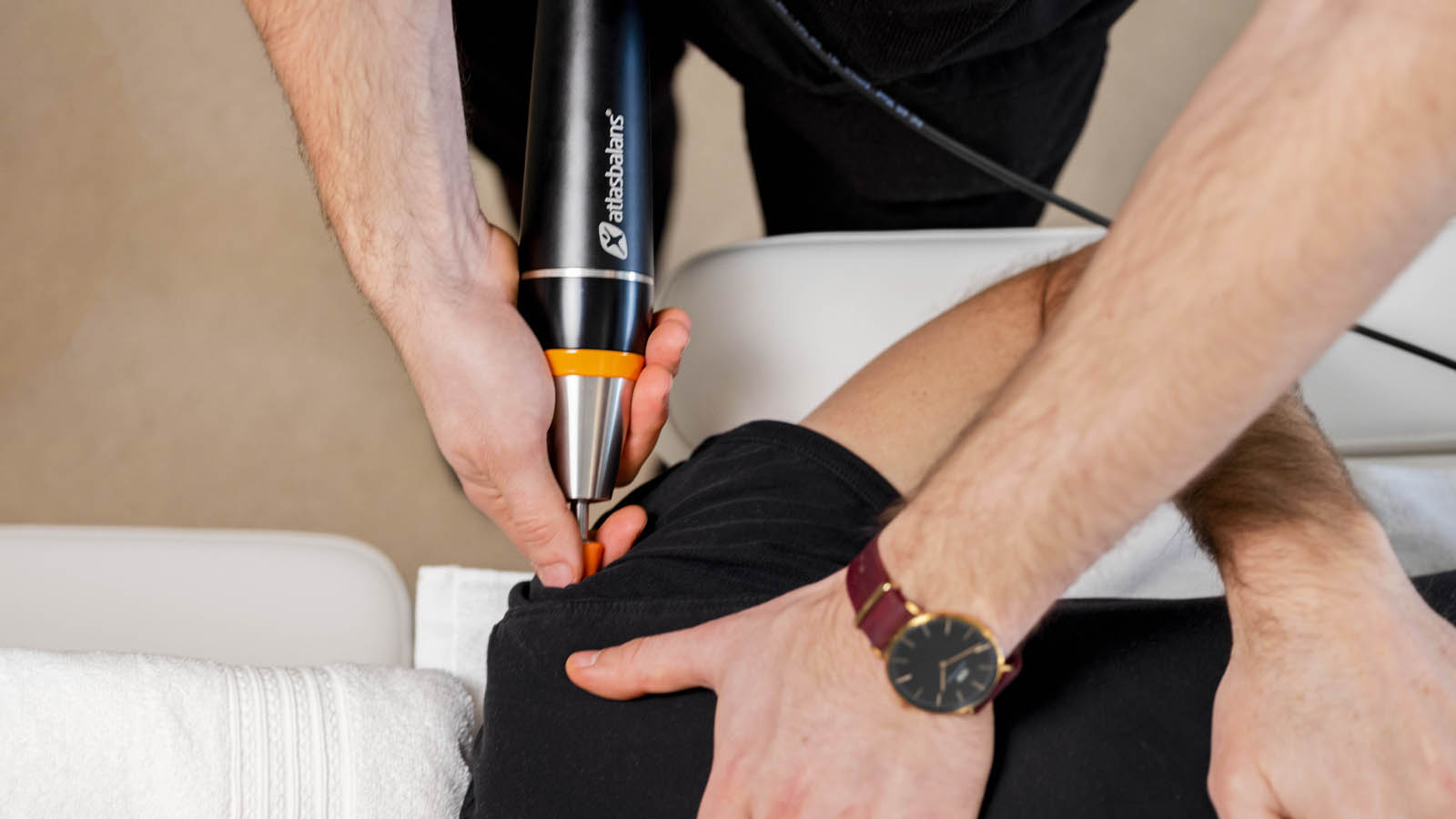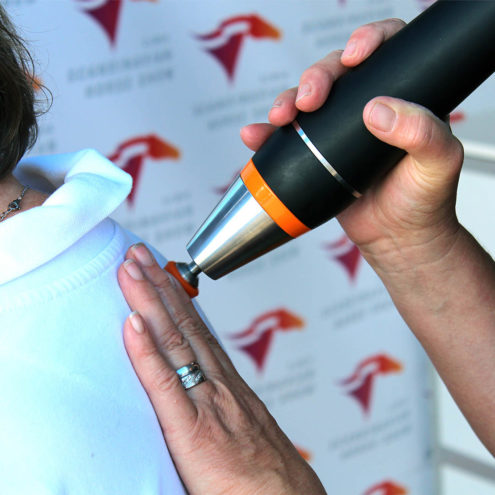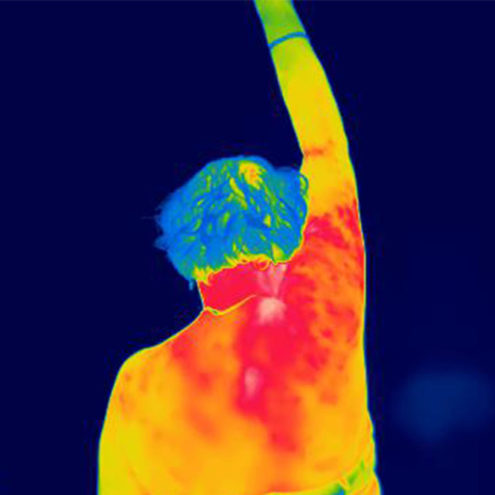Impingement treatment

Impingement or entrapment syndrome, as it is also known, is when tissues become squeezed together near a joint, causing pain during certain movements. When the tissues are squeezed and pressure is increased, pain results. Impingement is most common in the shoulder, but it can also affect other parts, such as the hip.
Impingement is most common in people aged 40 and over. It is also more common in women, even at a younger age. Working and playing sports with your arms at shoulder height increases the risk of shoulder impingement.
What causes Impingement?
Impingement is caused by overloading due to the tissue being loaded more than it is trained for and can handle. This causes imbalances in the muscles and fascia, and the movements cannot be performed with an optimal movement pattern. It may be tendons, bursae or other tissues that are overloaded and squeezed against bone structures, causing pain.
Impingement shaft
Shoulder impingement is the most common site of impingement. Often it is tendons, tendon attachments to one of the muscles supraspinatus, infraspinatur, subscapularis in the shoulder area that are overloaded with inflammation and pain as a result. It can also be the muscle itself, the biceps tendon or a bursa that protects the soft tissues in the shoulder that has become overloaded. Most commonly, the supraspinatus is involved in the entrapment. Read more about shoulder pain.
Impingement hip
Hip impingement is not as common as shoulder impingement, but like shoulder impingement, the joint becomes tight and tissues get pinched. It is most often caused by joint changes in the hip joint, a change in the femoral neck/head itself and/or the acetabulum.
Why do I have Impingement?
Since impingement occurs due to an overload, you have probably exposed your body to more than it was trained for. Often it is prolonged work over time with a less than optimal movement pattern that causes impingement, e.g. a lot of static work at shoulder height without slow adaptation. Even too much wear and tear, with repetitive movement patterns, can trigger impingement. But it can also be triggered more acutely by sudden movements or falls.
Symptoms of Impingement?
The symptoms of impingement are restriction of movement and pain. Many problems in the shoulder area produce similar symptoms and a diagnosis is made by a skilled doctor who tests the various tissues to determine the cause.
Symptoms that can be caused by shoulder impingement are pain in the shoulder and upper arm when lifting the arm outwards to the side. Lifting a little does not hurt, but between 60 and 120 degrees of lifting hurts, and above 120 degrees the pain subsides again. You also get muscle weakness and depending on the muscle, tendon involved, the movement problems vary after that, and that is the basis for the diagnosis.
The pain may occur during certain specific movements, such as pouring a cup of coffee. But it can also occur at rest, on the outside and front of the shoulder. The pain also often comes at night.
Impingement in pregnancy
During pregnancy, the body’s collagen structure changes and the fascia becomes softer and less stable. This can increase the risk of impingement during pregnancy.
When and where should I seek treatment for impingement?
Seek medical help to get a diagnosis.
How is impingement treated?
The treatment aims to bring the whole body into balance and get a flow going throughout the body. For example, if you have a rotated pelvis, this also has consequences up in the shoulder with altered, non-optimal movement patterns.
A FasciaClinic performs a body analysis that shows how your body is stressed. The treatment then aims to reduce the pressure in the overloaded tissues and allow the body to heal itself.
Impingement test
Tests are carried out by performing specific movements that stress a particular muscle/tendon attachment to find out which structures are involved.
Impingement – What can I do myself?
Exercising but in moderation is always good. Movement heals! Perform movements that do not aggravate the pain. The most important thing is mobility training but with movements that do not cause pain. You can also do strength training as long as it doesn’t hurt.
Take regular breaks in your work to reduce strain. Try to vary your movements. Try to reduce stress and practice relaxation and deep breathing. Warmth on the sore can relieve.
Exercises for Impingement?
If you have an impingement, you should do circulation training, movement training and weight training on a daily basis. You should be careful with weights and fast movements and all weight training should be done with light weights and many repetitions.
Impingement – frequently asked questions
Impingement healing time?
Healing time depends on how you take care of yourself. Proper movement and treatment to get the flow going can make problems disappear quickly. Rest and reduced movement make problems worse.
Impingement surgery complications?
Surgery is always risky and causes scarring and restrictions in the fascia. Physiotherapy and fascial treatment are preferable.
Can impingement be trained away?
Yes, you can train the shoulder muscles and improve mobility.
Does taping the shoulder help with impingement?
Yes, taping can help and reduce pressure on the joint.
 Search
Search


































